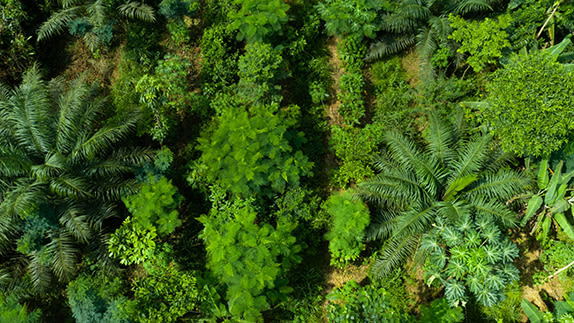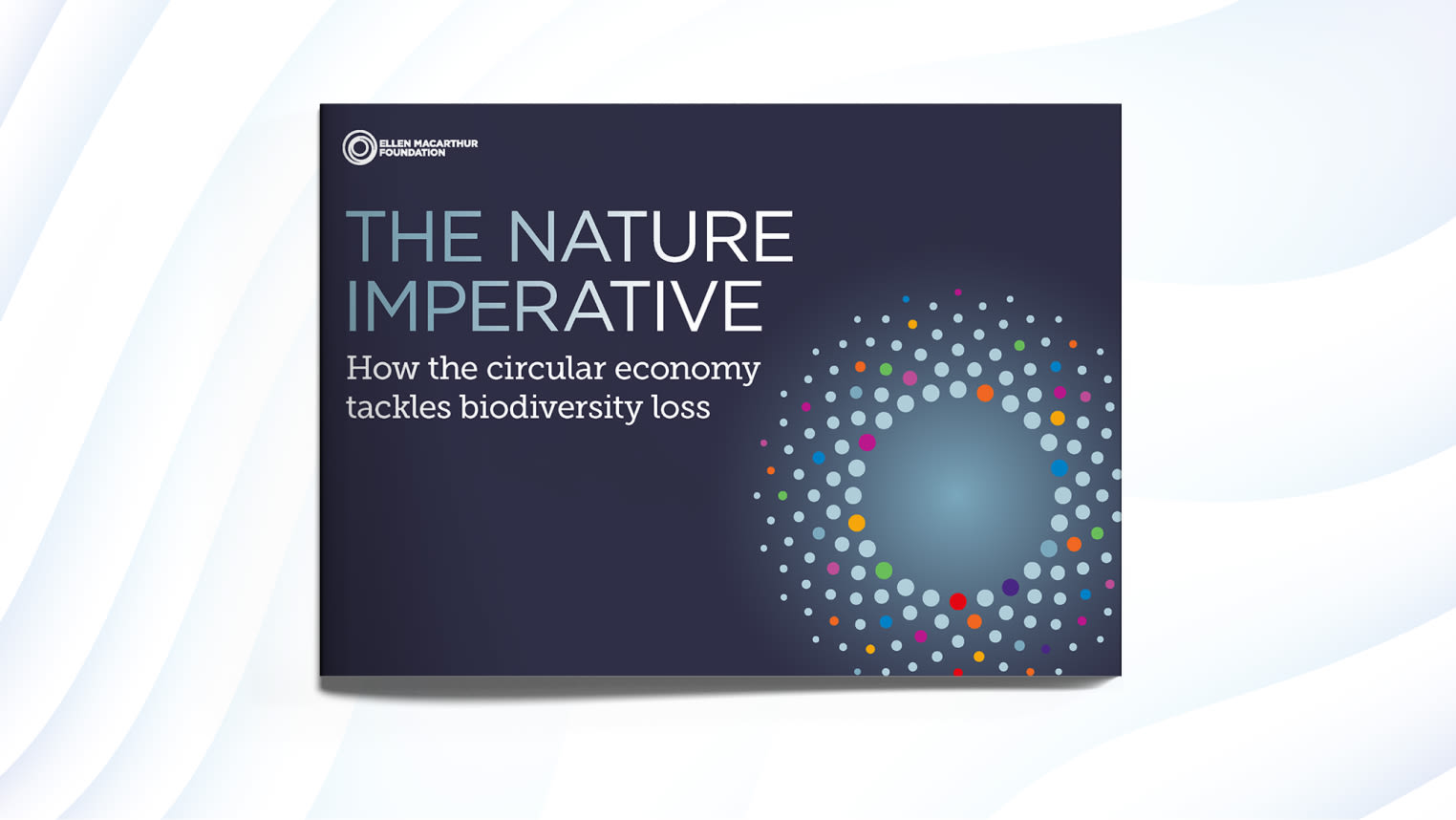Biodiversity is being lost at an unprecedented rate and our extractive, wasteful, and polluting linear economy is increasingly recognised as one of the main underlying causes of this crisis. Today, more than 90% of biodiversity loss is due to the extraction and processing of natural resources.
The circular economy offers a practical route to tackling biodiversity loss at its source and meeting biodiversity goals
To halt and reverse biodiversity loss, 196 states adopted the Kunming-Montreal Global Biodiversity Framework, calling for urgent action and a shift in how economies interact with nature.
The Foundation’s policy brief, Scaling action for nature: How the circular economy can help deliver the Global Biodiversity Framework, outlines how the circular economycircular economyA systems solution framework that tackles global challenges like climate change, biodiversity loss, waste, and pollution. It is based on three principles, driven by design: eliminate waste and pollution, circulate products and materials (at their highest value), and regenerate nature. can help accelerate that shift and how countries, working together with the private sector and other actors, can integrate it into their biodiversity plans.
Regenerating nature requires an economic transformation
To halt and reverse biodiversity loss, we need to fundamentally transform the way we produce, use, and consume our products and food. Conservation and restoration efforts alone – crucial though they are – will not be enough.
The circular economy offers a framework for such a transformation. If we eliminate waste and pollution, circulate products and materials, and regenerate nature, biodiversity can thrive. Applied together, these three principles are able to help tackle the root causes of biodiversity loss, as demonstrated in our report: The Nature Imperative: How the circular economy can help tackle biodiversity loss.
How the circular economy can play a fundamental role in halting and reversing biodiversity loss
This image is an adaptation of that presented by the Secretariat of the Convention on Biological Diversity’s report “Global Biodiversity Outlook 5” (2020) and the Nature article “Bending the curve of terrestrial biodiversity needs an integrated approach” (2020).
Each principle of the circular economy can have a positive impact on biodiversity
Eliminate waste and pollution — to reduce threats to biodiversity
In a circular economy, driven by design, waste and pollution are eliminated so these direct threats to biodiversity are reduced. For example, eliminating unnecessary plastics and re-designing plastic products to have value post-use (for reusereuseThe repeated use of a product or component for its intended purpose without significant modification., recycling or compostingcompostingMicrobial breakdown of organic matter in the presence of oxygen.) means they can circulate in the economy rather than being wasted and polluting the environment.
Circulate products and materials — to leave room for biodiversity
When products and materials are circulated in the economy, the need for production from virgin materialsvirgin materialsMaterials that have not yet been used in the economy. is reduced. In fashion, for example, business models that keep cotton clothing in use for longer, assuming the purchase of new clothes is displaced, will reduce the amount of land needed to grow cotton. This leaves more space for other uses, including the preservation of wilderness areas.
Regenerate nature — to enable biodiversity to thrive
Economic activity can, and needs to, actively rebuild biodiversity. For example, regenerative agricultural approaches, such as agroecology, agroforestry, and managed grazing, sequester carbon in the soil and improve its health, increase biodiversity in surrounding ecosystems, and enable agricultural lands to remain productive instead of degrading over time, thereby reducing pressure to expand them. Creating a circular economy for food, as demonstrated in the Big Food Redesign Challenge, is one of the most impactful things we can do to tackle climate change and build biodiversity.

Scaling action for nature: How the circular economy can help deliver the Global Biodiversity Framework
The circular economy offers countries a practical route to tackling biodiversity loss at its source and meeting biodiversity goals.
The biodiversity benefits of the circular economy can be demonstrated across sectors
Circular economy principles can be applied across different industry sectors, allowing for biodiversity benefits economy-wide. At the same time, a circular transformation can unlock various other environmental, economic, and social benefits, to provide opportunities for better growth, prosperity to societies, and to enable nature to thrive.
Our work highlights the key steps businesses and policymakers can take to scale this potential and help shape a nature-positive future. For businesses, using the circular economy framework to meet their biodiversity ambitions will be critical. At the same time, public policy intervention will be crucial to enable this transformation.
Momentum behind the circular economy is building and opportunities for new and better growth that not only help safeguard and rebuild biodiversity but also provide other society-wide benefits are emerging.
Featured insights
Sector deep-dives
These deep dives explore how applying circular economy principles to the four focus sectors not only helps tackle biodiversity loss but also provides many additional benefits.
Featured case studies
A regenerative supply chain alternative for palm oil
Dr. Bronner's is an American personal care company that relies on a high volume of agricultural raw ingredients to manufacture its soaps, toothpastes, and lotions. Many of these ingredients, in particular palm oil, are sourced from tropical areas, with global supply chains that are commonly associated with destructive environmental practices and the exploitation of local communities. After many years of unsuccessfully searching for an ethical and nature-positive source of palm oil, Dr. Bronner's decided to build one on its own.

















